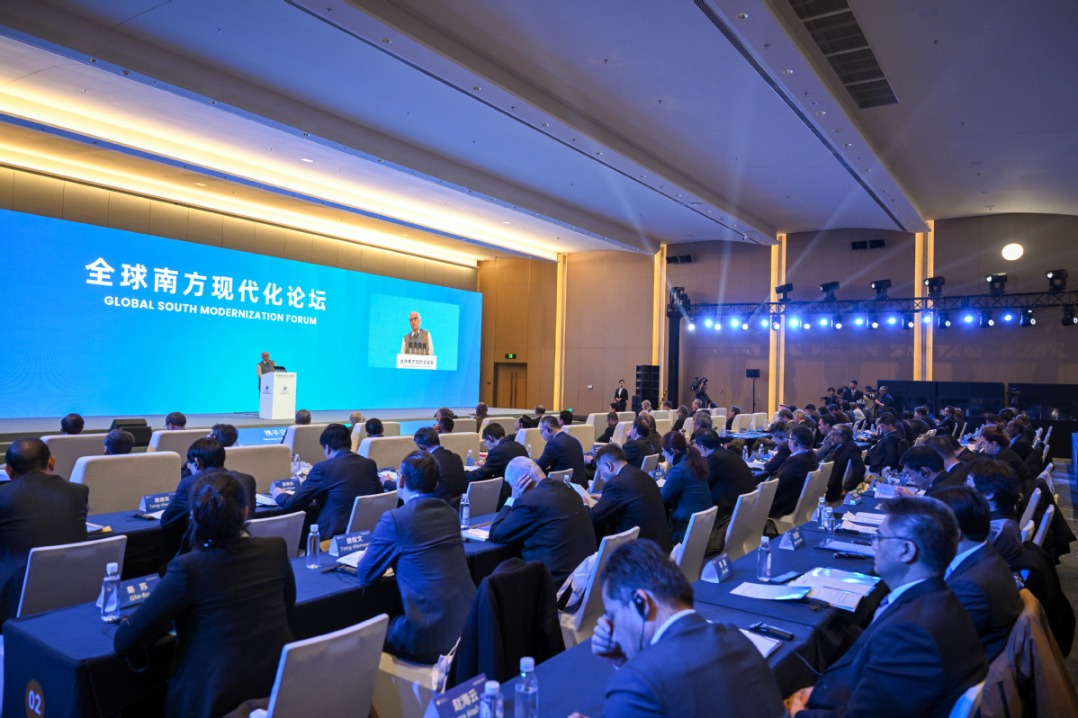Greenhouses have played a vital role in alleviating poverty in China

Editor's Note: China is set to realize its target of eliminating absolute poverty by the end of this year. What are the factors behind China's imminent success? In the eighth of a series of commentaries, a senior journalist of China Daily tries to find the answers:
"No matter if it is a white cat or a black cat, a cat that can catch rats is a good cat." This remark of former leader Deng Xiaoping is the core philosophy behind China's success in 42 years of reform and opening-up and during its final sprint toward realizing the goal of eliminating absolute poverty by the end of this year.
Poor villages and families are scattered across China, from the tropical Hainan province in the south to the freezing northern region, from the frequently flooded eastern region to the deserts and high plateaus in the west. So a one-size-fits-all approach could not help eliminate poverty in the country.
While the central and provincial governments improved education, communication and medical care for the poor families, only the local governments and the million-plus officials and professionals sent to rural areas to provide on-the-spot support could help the poor to increase their incomes. And the most effective way to do so is to find a job for a member of a poor family.
China has a huge rural population-about 551 million by the end of 2019-but limited cultivable land. Each farming family usually works on a plot no bigger than half a hectare, so even if it puts in backbreaking labor to grow rice, wheat or corn, it can only earn only a few thousand yuan a year.
Finding a poor family's member a non-farming job can make a big difference, however. At present, more than 290 million rural residents are working in factories and the service sector in the coastal region, earning between 3,000 yuan ($432) and 5,000 yuan a month while getting free accommodation and food. If such a worker can bring home 30,000 yuan a year, he or she can help lift a family of seven out of poverty.
That's why the local governments in poor regions are busy trying to find jobs for poor farmers. Which explains why, when strict pandemic prevention and control measures were imposed on many parts of the country, the local governments in poor regions were as eager as the authorities in the labor-thirsty coastal region to ensure the laborers returned to their workplaces in cities.
By cooperating with the employers thousands of miles away, they managed to send millions of such workers by specially arranged trains and buses, even chartered flights.
In recent years, land transfer has been widely used as a new method to help the poor. In China, farmlands are collectively owned. Each household is given a plot, but it cannot sell that plot. This rule is to ensure no family is forced to live in "absolute" poverty even if its members lose their city jobs, as they can return home and work on their plot of land and earn a living.
But since many farmers who get relatively well-paying jobs in cities "desert" their rural plots, the government introduced the model of land transfer. Under the model, a farmer can lease his/her plot to an investor, who conducts large-scale farming, and earn about 6,000 yuan per hectare per year and enjoy the privilege of being the first to be hired for any new project.
I once visited a poor village in Ganzhou, Jiangxi province. A flood had just hit the area and destroyed the mini-pumpkins planted in dozens of greenhouses. A farmer, who had transferred his plot to an investor a year ago, was present at the site.
"It could have been deadly for my family, but I don't have to worry about it," he said, because "I will get my rent, and since cleaning the greenhouses calls for a lot more work, and I can earn some more money along with other villagers by being hired to do so." He earned 100 yuan a day working for the investor.
Greenhouses have played a not so minor role in poverty alleviation. They can be seen in many rural areas around the country. To farmers who don't want to transfer their plots to investors, the government provides preferential loans which they can use to build greenhouses. Normally, it costs about 20,000 yuan to build a greenhouse. The government also sees to it that quality seeds are given and technicians sent to teach the farmers how to grow vegetables and fruits in greenhouses. The harvest from one greenhouse can earn a family about 20,000 yuan a year.
Therefore, in China, people know that a family that owns a greenhouse must be a family that has bid good-bye to poverty.
The author is former deputy editor-in-chief of China Daily.

Today's Top News
- 15th National Games embodiment of high-quality development
- Lawmakers' thousands of proposals receive responses
- China warns Japan against interference
- Nation's euro bond sale shows investors' confidence
- No soft landing for Tokyo's hard line
- Commerce minister urges US to increase areas of cooperation






























